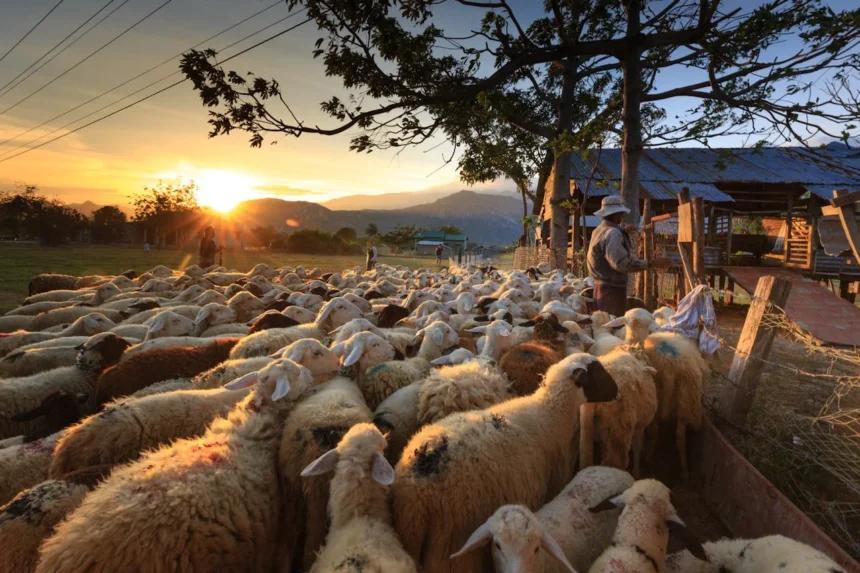Imagine a vast, open plain, where the wind sweeps over the grasslands and the horizon stretches endlessly. In the distance, a group of families moves with their herds goats, sheep, camels, or cattle. These families are not tied to one place; instead, they follow a seasonal cycle, moving from one pasture to another. This is a glimpse into the world of pastoral nomadism. A way of life shaped by the rhythms of nature, the movement of animals, and the deep connection between people and their environment. But what is pastoral nomadism, really? It is not just a lifestyle, but an ancient tradition that has endured across generations.
What Is Pastoral Nomadism? Definition and Overview
Pastoral nomadism is a form of subsistence agriculture in which people rely on the herding of animals for their livelihood. Unlike settled farming practices, pastoral nomads move their herds from one grazing area to another, depending on the seasons and the availability of pasture. This mobility is essential for survival in regions where the climate is too harsh for traditional farming. Pastoral nomadism has been practised for thousands of years in various parts of the world, including Central Asia, the Middle East, and Africa.
Characteristics of Pastoral Nomadism
Pastoral nomadism is characterized by several key features:
- Mobility: Nomads travel seasonally or cyclically, following patterns of rainfall, temperature, and pasture availability.
- Animal Husbandry: The primary focus is on raising livestock, such as goats, sheep, cattle, and camels. These animals provide food, clothing, and materials for shelter.
- Adaptation to Environment: Pastoral nomads are highly adapted to the often arid and semi-arid environments where they live. They know how to navigate the land, use local resources, and manage their herds efficiently.
- Community Structure: Nomadic societies are often organized into tribes or extended family groups, where communal living and sharing of resources are common.
History and Evolution of Pastoral Nomadism
Pastoral nomadism dates back to ancient times, with evidence suggesting it emerged around 10,000 years ago. As humans began to domesticate animals, they realized that moving herds across different landscapes offered several benefits, including access to better grazing lands and the ability to avoid overgrazing in one location.
In early civilizations, pastoral nomads played a crucial role in trade, transportation, and cultural exchange. They often acted as intermediaries between settled agricultural societies, providing valuable goods such as wool, hides, and meat.
Pastoral Nomadism in Different Regions
- Central Asia: The steppes of Central Asia, home to peoples like the Mongols, have long been associated with pastoral nomadism. The vast, treeless plains offered perfect conditions for herding, and nomadic tribes such as the Kyrgyz, Kazakhs, and Turkmen continue this tradition today.
- The Middle East and North Africa: The Bedouins of the Arabian Peninsula and the Berbers of North Africa are examples of nomadic groups whose way of life has been centred around herding camels, goats, and sheep.
- Sub-Saharan Africa: In regions like the Sahel, pastoral nomadism has been practised for centuries. The Fulani, Somali, and Tuareg are some of the ethnic groups that have relied on herding as a way of life.
The Role of Livestock in Pastoral Nomadism
Livestock is at the heart of pastoral nomadism, and it is more than just a source of food. For many nomadic peoples, animals represent wealth, social status, and spiritual significance.
- Food Source: Animals provide milk, meat, and sometimes even blood, which is used as a staple food. Milk is often consumed fresh or fermented, and meat is used for special occasions.
- Clothing and Shelter: Animal skins are used to make clothing and tents, which are essential for protection from the elements. Wool and leather are crafted into garments and tools.
- Transport: In many nomadic societies, animals like camels, horses, and yaks are used as transportation to move people and goods across vast distances.
Challenges Facing Pastoral Nomadism
While pastoral nomadism has sustained communities for centuries, it faces numerous challenges in the modern world. Changes in climate, land use, and politics are affecting the traditional nomadic lifestyle.
- Climate Change: Many nomadic communities are feeling the impact of changing weather patterns, such as droughts, which reduce the availability of grazing lands and water sources for livestock.
- Land Encroachment: As urbanization spreads, traditional grazing areas are being encroached upon by agriculture, industry, and infrastructure projects, forcing nomadic groups to adapt or abandon their way of life.
- Government Policies: In some regions, government policies have encouraged settled farming over nomadic herding. This has led to a decline in pastoralism in certain areas, and nomadic groups may face legal challenges to maintain their traditional rights to roam.
What Is Pastoral Nomadism? The Cultural Significance
Beyond its practical aspects, pastoral nomadism is deeply embedded in the cultural identity of many societies. It shapes the way people think about their relationships to the land, to their animals, and to each other.
- Social Organisation: Nomadic groups are often organized in tight-knit, hierarchical communities, where elders hold significant authority. The movement of herds requires coordination, and decisions are usually made collectively.
- Cultural Traditions: Pastoral nomadism has influenced art, music, and storytelling. Songs, poems, and dances often reflect the deep connection between people and their herds, and the challenges they face while living on the move.
- Spiritual Beliefs: For many pastoral nomadic societies, animals are not just seen as commodities but are revered in religious or spiritual practices. The welfare of the herd is often tied to the health and well-being of the community.
Conclusion: Preserving the Pastoral Nomadic Way of Life
So, what is pastoral nomadism? It is more than just a way of life; it is a living history that connects people to their environment and to each other. Despite the challenges posed by modernity and climate change, many pastoral nomadic communities continue to thrive, maintaining their traditions and adapting to new circumstances. The future of pastoral nomadism will depend on finding a balance between preserving these age-old practices and integrating them into the changing world.
As we move forward, it is important to recognize the cultural, ecological, and economic value of pastoral nomadism. Supporting policies that protect the rights of nomadic communities and promote sustainable practices can help ensure that this ancient way of life endures for generations to come.




